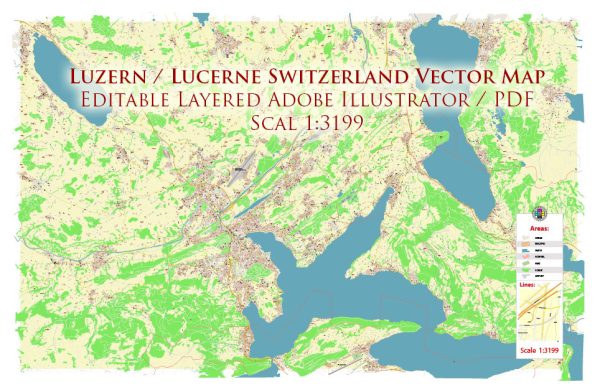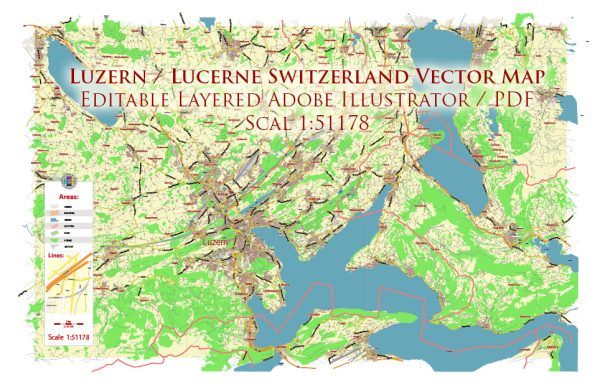The city of Lucerne, located in central Switzerland, has a rich history of urban development that spans several centuries. Here’s an overview of the key historical developments in Lucerne’s urban evolution:
- Early Settlement and Foundation:
- Lucerne’s history dates back to the medieval period when a small settlement was established around the shores of Lake Lucerne.
- The city’s strategic location at the crossroads of important trade routes contributed to its early growth and development.
- Medieval Lucerne:
- Lucerne officially gained town status in the early 13th century and became a significant trade and commerce center.
- The construction of the Chapel Bridge (Kapellbrücke) in the 14th century and the Water Tower (Wasserturm) played a crucial role in shaping the city’s skyline.
- Fortifications and Defense Structures:
- Lucerne was fortified with city walls and towers during the medieval period to protect against external threats.
- These fortifications, including the Musegg Wall with its nine towers, are still partially preserved and provide insights into the city’s defensive strategies.
- Economic Growth and Trade:
- Lucerne continued to thrive as a trading hub, benefiting from its location along important trade routes and its access to Lake Lucerne.
- The guilds, representing various trades and crafts, played a significant role in the economic and political life of the city.
- Reformation and Political Changes:
- The 16th century saw the impact of the Reformation in Lucerne, leading to religious and political changes.
- Lucerne remained a Catholic stronghold, and the Jesuit Church (Jesuitenkirche) was constructed in the early 17th century as a symbol of the city’s commitment to the Catholic faith.
- Modernization and 19th Century:
- The 19th century brought about significant changes in Lucerne’s urban landscape with the demolition of some medieval structures and the construction of new buildings.
- Industrialization and improved transportation links, including the arrival of the railway, further fueled economic development.
- Tourism and Cultural Heritage:
- In the late 19th and early 20th centuries, Lucerne emerged as a popular tourist destination, attracting visitors with its picturesque landscapes and historic charm.
- Landmarks such as the Lion Monument (Löwendenkmal) and the Richard Wagner Museum became cultural attractions.
- Contemporary Lucerne:
- Lucerne has continued to evolve as a modern city while preserving its historical character.
- The preservation of the Old Town (Altstadt), with its well-preserved medieval architecture, contributes to the city’s appeal as a cultural and historical destination.
Lucerne’s urban development reflects a harmonious blend of medieval charm and modern amenities, making it a city that seamlessly combines history with contemporary life.



 Author: Kirill Shrayber, Ph.D.
Author: Kirill Shrayber, Ph.D.